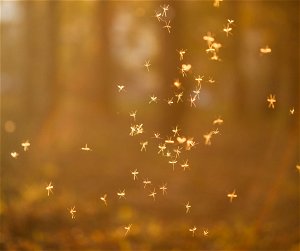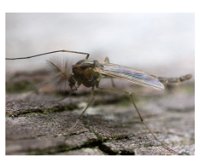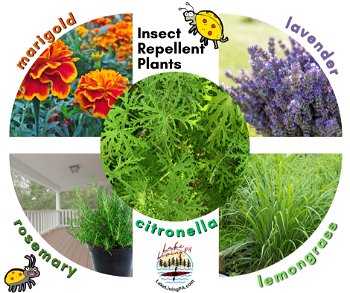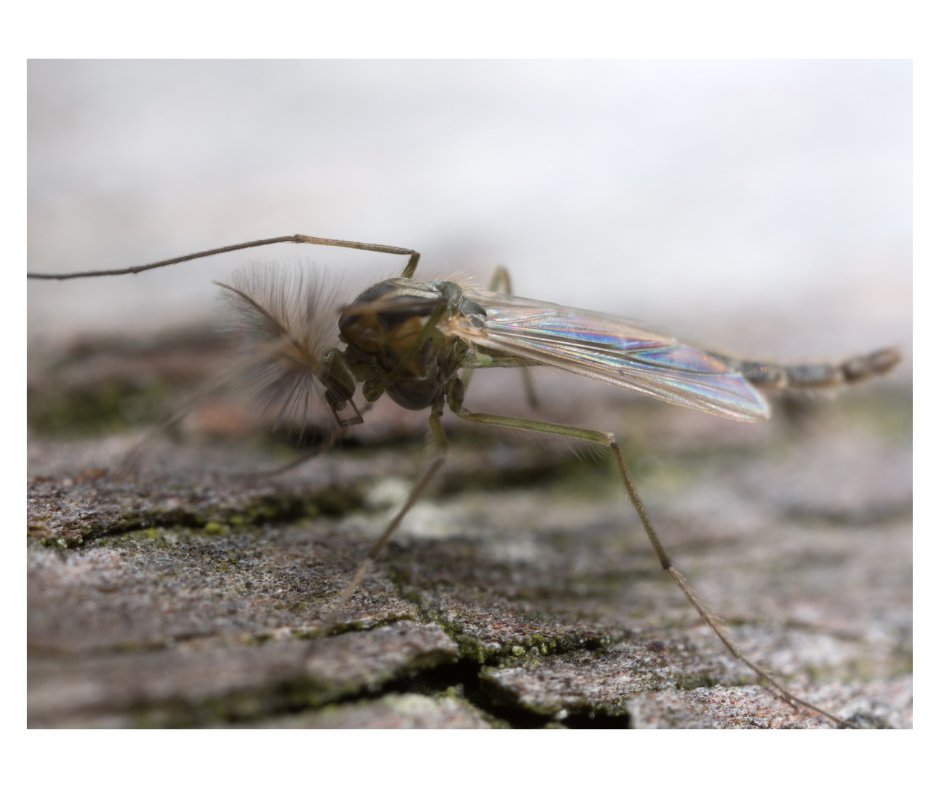Springtime Bugs At Lake Wallenpaupack Means Lake Flies
Lake Wallenpaupack, a unique treasure nestled in the Northern Poconos, is not just a destination for vacationers and residents—it’s a thriving ecological hub. And that includes BUGS.

Each spring, the folks at the Lake Wallenpaupack Watershed District find themselves addressing common misconceptions about one of our insect inhabitants. Although often referred to as “mayflies,” the bugs that swarm in great clouds around the lake this time of year are commonly known as “lake flies” or non-biting midges. While they don’t bite (as their clever nickname implies), their large swarms can be quite a nuisance. Fortunately, they die off within 3-5 days. However, their presence is assured for the following spring as they breed in these large swarms we see. These tiny insects are a common sight around the lake during the early spring months and their presence is both a blessing and a nuisance to those enjoying the area’s natural beauty. Believe it or not, they are actually quite important to our environment.
What Are Non-Biting Midges?
Non-biting midges, also known as chironomids, resemble mosquitoes. In some regions they are referred to as “blind mosquitoes.” These insects are part of a diverse family of flies that flourish in aquatic environments, including the pristine waters of Lake Wallenpaupack. They are a vital part of the ecosystem, serving as a significant food source for fish and other aquatic creatures. The larvae of non-biting midges, often found in the sediment of lake beds, play a crucial role in breaking down organic matter, thereby contributing to the nutrient cycle within the lake.

The lifecycle of non-biting midges is what you would expect of an insect. They undergo complete metamorphosis, starting from egg to larva, then to pupa, and finally emerging as adults. The adult bugs are most visible during their “mating swarms,” when they dancing clouds of insects that can be mesmerizing and, at times, overwhelming. The Lake Wallenpaupack Watershed Management District pays close attention to the population dynamics of non-biting midges due to their dual role as both a crucial ecological component and a potential nuisance to residents and visitors. Large swarms can impact outdoor activities, but they also indicate the lake’s overall health. A healthy midge population suggests a balanced aquatic ecosystem, vital for maintaining the quality of recreational waters and supporting local biodiversity.
Managing The Lake Bugs at Wallenpaupack
Managing the midge population without disrupting the ecosystem involves a range of strategies. The Watershed Management District diligently monitors water quality and preserves natural habitats that naturally regulate midge numbers. This includes fostering the health of fish populations that feed on midges and managing shorelines to reduce excessive organic buildup, which is where midge larvae thrive.
Understanding and coexisting with these insects involves a few practical steps for residents and visitors. Since midges are attracted to light, reducing outdoor lighting during peak swarm periods can lessen their presence around homes and gathering areas.

Incorporating plants like lemongrass, marigold, citronella, lavender, and rosemary around your patio not only enhances the space’s beauty and aroma but also plays a crucial role in maintaining a healthy watershed and ecosystem. By choosing these natural insect repellents, you can protect your outdoor area from nuisance insects without relying on chemical sprays that might harm local wildlife and water sources. Basil, known for repelling house flies and mosquitoes, is excellent near outdoor seating areas. Mint, another mosquito deterrent, is best grown in pots to manage its vigorous expansion. Catnip, remarkably more effective than many commercial repellents, is a great choice for keeping mosquitoes at bay. Lastly, bee balm, although it attracts bees and butterflies, helps deter mosquitoes. Together, these plants provide a chemical-free option for maintaining a pleasant and pest-free garden environment. Planted in decorative pots or garden beds, these plants form a vibrant, fragrant barrier that keeps pests at bay naturally. This eco-friendly approach supports biodiversity and safeguards the natural resources in your community, making your patio a peaceful, sustainable retreat. By taking these simple environmentally-friendly bug control measures, you can play a significant role in maintaining the balance of Lake Wallenpaupack’s ecosystem.
While non-biting midges and other lake bugs may test our patience during certain times of the year, their presence is a reassuring sign of Lake Wallenpaupack’s vibrant ecosystem. By understanding their role and adjusting our practices, we can appreciate these insects not as pests but as essential players in the ecological community. Whether you’re a resident enjoying the lake’s shores or a visitor taking in its natural beauty, remember that these tiny creatures play a big role in keeping Lake Wallenpaupack healthy and thriving for all to enjoy.
So, the next time you find yourself amidst a swarm of non-biting midges, take a moment to consider their vital contributions to the lake’s ecosystem—our shared home is all the better for their presence. And, remember, after all, it could be worse. It definitely could be snowing!

By the way, if you’re in the market for a lake house, maybe you should consider one that has a screened porch!Check these homes for sale in the area with screened porches! I’ll be happy to help you with all of your real estate needs and get you started on the road to Lake Living PA!


